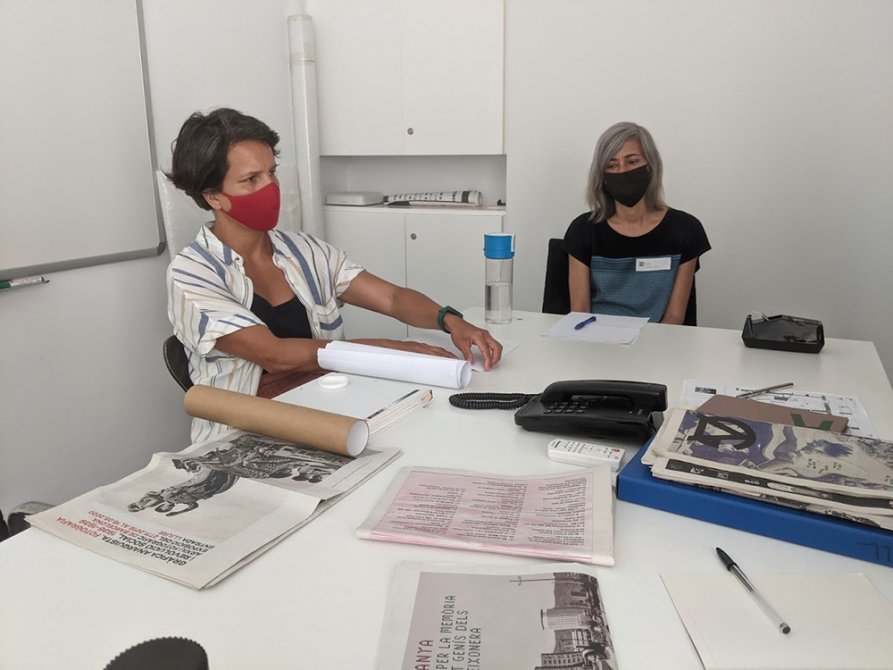Ruta de autor
Formed in 2011 by Aymara Arreaza R. (Ciudad Bolívar, 1977) and Lorena Bou Linhares (Caracas, 1977). Live in Barcelona.

Notes for an Eye Fire exhibition views. Photo: Miquel Coll
La ciutat com a exposició is an investigation into the panorama, its history and its significance today.
The word ‘panorama’ was coined by the Irish painter Robert Barker in 1787 to describe a 360° painting displayed in a purpose-built rotunda that created an immersive spectacle for the viewer. Three panoramas formed a part of the 1888 Barcelona Universal Exposition, including a depiction of the Battle of Waterloo which remained on display for two years in Plaça de Catalunya.
Ruta de autor’s research and critical analysis of the panorama in Barcelona takes the form of a newspaper that serves as a portable exhibition and unfolds on the gallery walls. It begins with another kind of 19th-century entertainment, which could be considered the precursor of the panorama: the tethered hot air balloon ride, an experience that offered the paying public a bird’s-eye view of the city. The exploration of the panorama shows how its architecture combined a new visual paradigm with a symbol of industry, and it is followed by a reflection on the vestiges of modernity in the Ciutadella Park.
Making of
Photos: Latitudes and Hiuwai Chu
About Ruta de autor
Ruta de autor combines archival and historical research from a range of disciplines to investigate the city. Its walking tours through public spaces act as a conduit for bringing people together while generating critical perspectives on official narratives by peeling back the multiple layers of a city’s history from its streets, architecture and monuments. It juxtaposes the archive with the present day by recalling histories and giving new meaning to familiar places. One of its emblematic routes is Barcelona and the Indianos (2014–ongoing), which follows the lives of those who set off to make their fortune in the colonial Americas in the 19th century and examines their impact on the city upon their return. In 2019 Ruta de autor organised Green Flag, a route and exhibition which explored the impact of a water treatment plant and the rerouting of the River Llobregat.
Ruta de autor are Aymara Arreaza R. and Lorena Bou Linhares, who pool their rich backgrounds in comparative literature, visual cultures and critical theory. Green Flag (2019) was presented in and around the Centre Cívic Jardins de la Pau, El Prat de Llobregat, with /UNZIP Arts Visuals. Their recent routes include Calippos of the World, with Larre (2020); Barcelona and America Tour: A Cartography of the Colonial Narrative (1835–1888), with MACBA (2019), and The Port ‘in Sekula Saeculorum’, with the Fundació Tàpies and The Green Parrot (2017). rutadeautor.com
Calippos of the World (2020). Video: Agustín Ortiz.








































